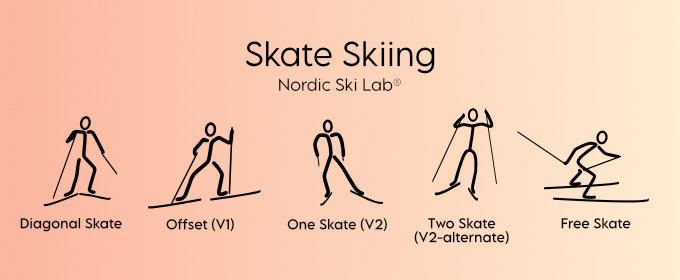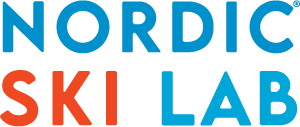
Table of Contents
Introduction
This page has tips and advice for new or self-taught skate skiers. You can learn better skate skiing technique, more easily.
Skate skiing is challenging for beginners. The initial learning curve is steep.
In part, that’s because the mechanics of skate skiing are unique and unrelated to other sports, including ice skating.
It’s common to experience frustration when getting started, but there are ways to make your entry into the sport easier and more enjoyable.
This article outlines 7 ways you can bend the learning curve and avoid or overcome common beginner problems.
The keys to success are:
- Buy quality gear that fits you.
- Understand the mechanics of how your feet and skis should work.
- Avoid skate skiing with homemade technique. Learn the real techniques.
Did you know we instructional cross-country ski videos?
For skiers just getting started:
Help for struggling skate skiers: The One Skate Dance Drill
Equipment Matters
Buy gear for the skier you aspire to be, not the skier you are.
Skate skiing is hard. Skate skiing on poorly fitting, heavy, cheap gear is brutally hard.
Buy the best gear your budget allows and don’t look to economize unnecessarily.
I know this is hard to appreciate when you are just starting out, but trust me when I tell you that the quality of your gear will greatly influence how rapidly you learn to skate ski.
It’s noticeably easier and more enjoyable to skate ski on quality equipment.
Don't Join Club Offset
There are 5 skate skiing techniques. Techniques are somewhat analogous to gears on a bike. Each technique is best suited to different terrain and speeds of travel.
Related Article:
How Cross Country Ski Techniques Work
Of the 5 techniques, Offset (V1 Skate) and One Skate (V2 Skate) are used most often by expert skiers. They cover the broadest range of terrain and speeds of travel.
If you teach yourself, you’ll naturally fall into a sort of homemade version of Offset and use it everywhere you go.
Avoid this trap at all costs.
If you ski with your homemade offset technique everywhere, you will:
- Miss out on the joys and challenges of learning the full range of techniques.
- Ski slower and less efficiently than you would otherwise.
- Exacerbate strength and alignment imbalances in your body. (Offset is an asymmetrical technique.)
To avoid this pitfall, focus on learning One Skate (V2 Skate) early on. The secret is to finesse your balance skills. Don’t try to muscle your way through it.
The video at the top of this page will walk you through the initial stages of learning One Skate.
No More Walking Feet
How the pressure works across the sole of your foot in skating skiing is completely different from anything you’ve learned before.
Knowing how to weight and unweight your feet is one of the secrets to early success in skate skiing.
In walking, you strike the ground with your heel and roll forward through the ball of the foot. I call this “walking feet”.
Your “walking feet” are hardwired. This is a difficult habit to overcome, but it’s key to making your skate skis work.
You must cure walking feet to skate ski. You have to stop rolling through the ball of your foot and start rolling through the inner edge of the foot.
This, btw, is why ice skating skills don’t translate to skate skiing. In ice skating you can roll through the ball of the foot without penalty.
In skate skiing, rolling through the ball of the foot drives the tip of the ski into the snow and trips you up.
So a skate kick (leg push) is in the sideways direction. During the push, the ski rolls onto its inside edge.
This happens because the skier rolls pressure through the inside edge of the foot, not through the ball of the foot.
Ski Uphill, No Poles
You’ll hate this, but you’ll be glad you did it.
A common mistake is using the upper body and poles to haul yourself uphill. You feel like your arms are dying but you can’t access the power of your legs. In Offset, approximately 60% of the propulsion should come from the legs.
Put down your poles and learn how to ski uphill, legs only. Use a wide, low stance and make a wide v-shape with your skis. Practice this often, more often than you want to.
The goal is simple: try to make it easier. How can you create glide with every step? Experiment with tempo, step size, stance width, and other factors.
What happens when you put your poles back on? Pay attention to the V shape your skis are making.
If your V narrows, it means you are no longer using your legs effectively. You’ll feel like you’re hauling yourself up the hill with your upper body.
Put the poles away and try again.
Ski Small
Many common skate ski drills emphasize “standing tall” on your ski. The idea is to challenge your ability to balance on a gliding ski.
Avoid these drills.
Instead, look for ways to make it easier to maintain your balance.
- Lower your centre of mass by maintaining some soft flexion at the ankle, knee and hip joints at all times.
- Never stand fully upright.
- Stay compact by minimizing the range of motion in your arms and legs.
- Pay attention to how your weight is distributed across the bottom of your feet. Weight your foot evenly for better balance.
Keep your body compact (“skiing small”) and avoid excessively large movements.
Once you’ve built a success zone, where you enjoy better stability, comfort and control, then gradually expand your range of motion.
Double Pole
Yes, double poling is a classic cross country ski technique, but you can do it in skate skiing equipment too.
Some of the advantages of double pole practice for skate skiers:
It simplifies things, so you can focus on your poling mechanics without having to worry about your kick (leg push).
The way you bend at the hips, knees and ankles in Double Poling is similar to One Skate and Two Skate.
Double Poling teaches you how to create full body tension; how to be both braced and activated throughout your core, but still make movements that are fluid and smooth.
It teaches you how to transfer power from your upper body into your poles and into your lower body and skis.
Get Professional Help
I know this will seem self-serving, but if you enjoy learning with online videos that break down and clearly demonstrate what you need to do, you can’t do better than subscribing to Nordic Ski Lab.
With our extensive collection of skate skiing drills, expert demos, video technique analysis and technique explainer videos, you will greatly accelerate your learning curve.


